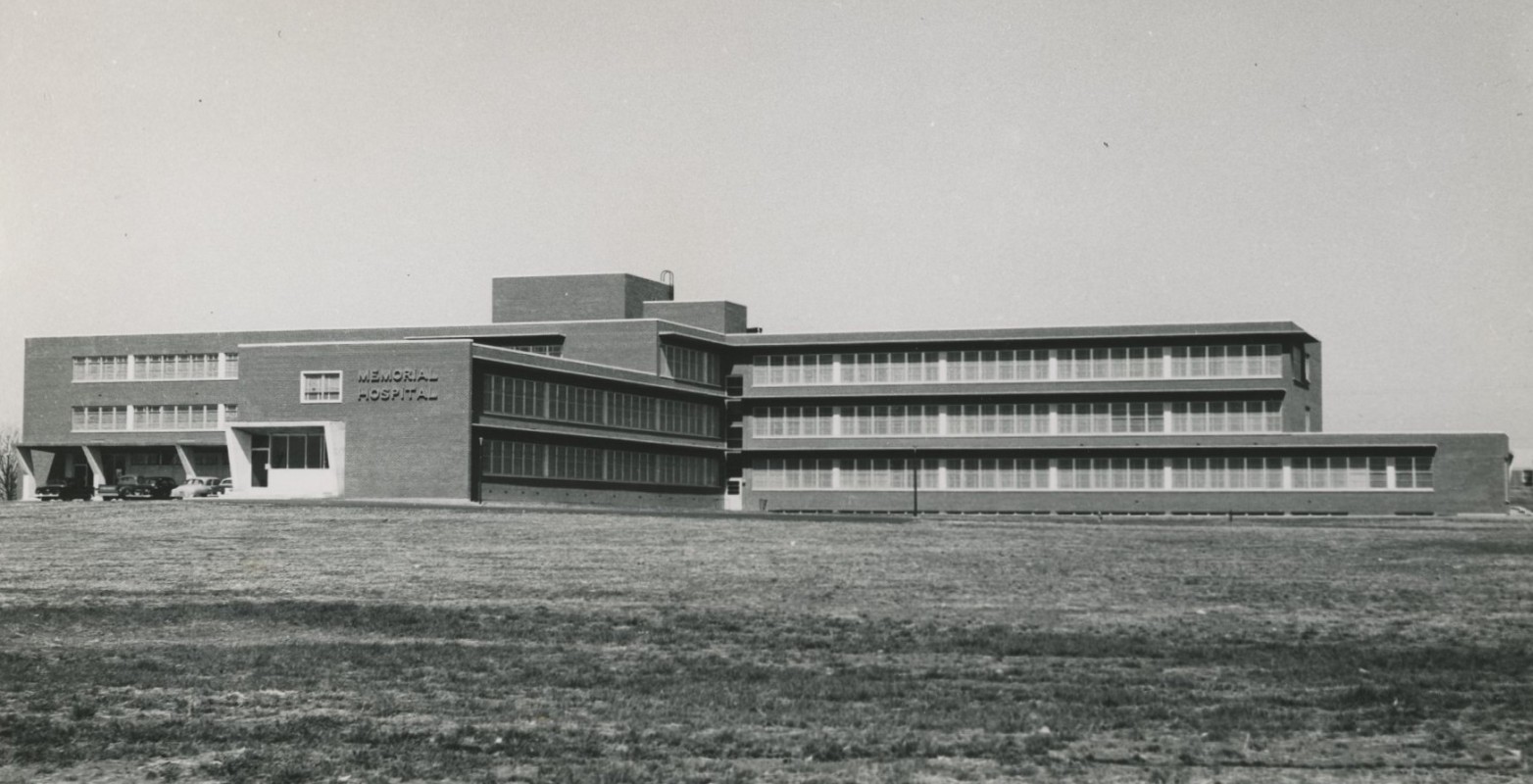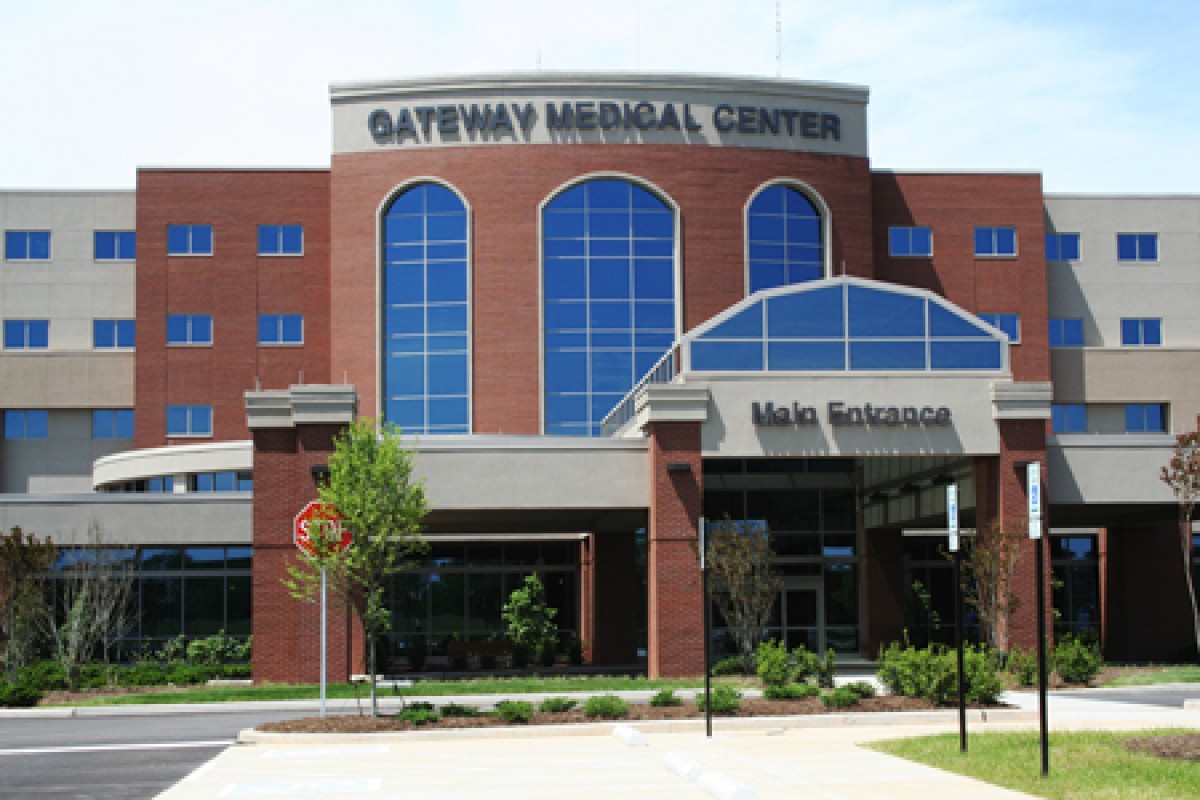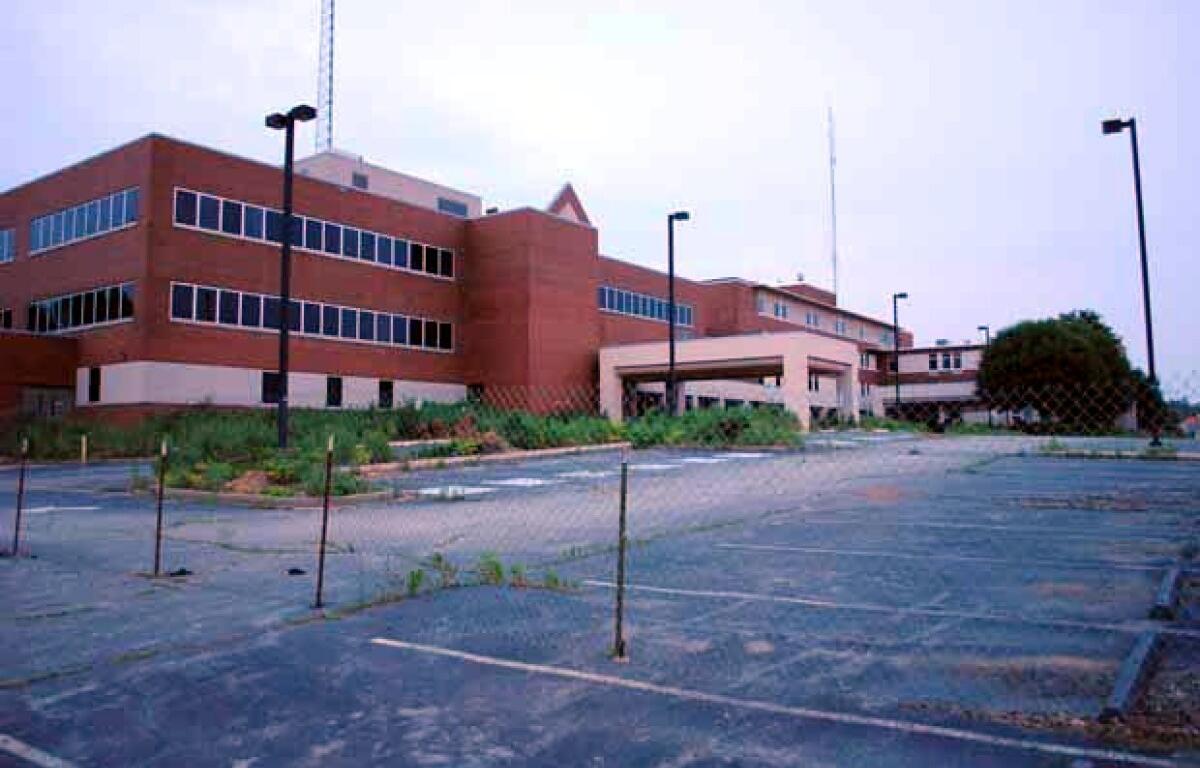CLARKSVILLE, TN (CLARKSVILLE NOW) – As three health care groups are suddenly jockeying for the right to build a new hospital here, many longtime Clarksville residents have been spurring their memory: How did we end up in our current situation – with only one hospital that’s been widely criticized (fairly or not) — despite decades of efforts to improve its quality and reputation?
In recent weeks, both Ascension Saint Thomas and TriStar Hospitals have announced plans to build full-service hospitals with ERs in Clarksville, pending the approval of state Certificates of Need (CON). Shortly after, Tennova Healthcare-Clarksville announced it would ask to shift its already acquired CON for a satellite hospital from north Clarksville to Exit 11, next to its Sango ER and the planned Ascension site.
Digging into the history of our hospital and its ownership, as documented in Leaf-Chronicle and Clarksville Now archives, three surprising key points emerge:
- We didn’t choose to have the for-profit Tennova owners take over our hospital.
- Decades ago, we had a chance to sell it to Vanderbilt, Saint Thomas or several others, but we chose not to.
- Vanderbilt has been working from the sidelines for three decades to improve health care in Clarksville.
Cutting hospital’s ties to government

Clarksville Memorial Hospital (CMH) opened in 1954 with 105 beds at Madison Street and Memorial Drive (the current site of Publix). It was established under a private act of the Tennessee Legislature, with its board chosen first by the legislature and later by the Montgomery County Commission and Clarksville City Council. The hospital functioned that way for 40 years, effectively being owned and operated by the public.
That had to change in the 1990s, as government-affiliated hospitals struggled to respond to a swiftly evolving health care industry. Old rules from the 1950s limited Clarksville Memorial’s ability to make service agreements with local physicians, who were signing up with Nashville hospitals. Those same rules stood in the way of contracts with insurance companies and HMOs.
Starting in 1996, Clarksville Memorial shifted from its local government affiliation to become a private, nonprofit entity. The Clarksville Regional Health Care System was established, and it leased the hospital from the Memorial General Hospital District Board. If “Clarksville Regional Health Care System” doesn’t sound familiar, that’s because two years later they changed their name to “Gateway Health System” (GHS), and our 206-bed hospital was renamed “Gateway Medical Center.”
Gateway puts itself up for sale
Over the next five years, Gateway showed increasing signs that it wasn’t thriving in the new world of health care. In March 2005 – 20 years ago – hospital leaders were looking to improve the reputation of the hospital, and to keep people with higher-end commercial insurance from driving to Nashville for health care. Gateway was getting only 67% of the Clarksville hospital business, and they wanted to improve that to 83%.
Gateway’s solution: Build a new hospital, even if that meant selling to a larger health care group that could help pay off Gateway’s $43 million in debt.
Gateway Health Systems invited 11 hospital operators, both nonprofit and for-profit, to submit proposals for construction of a new hospital. Among them were several Nashville-based groups, including nonprofits Saint Thomas and Vanderbilt University Medical Center, and for-profit Community Health Systems. One proposal in particular caught their interest: Triad Hospitals Inc., the nation’s third largest publicly traded hospital chain, and they didn’t yet have a presence in Tennessee – Clarksville would be their first.
Leadership visited Triad hospitals in Las Cruces, New Mexico, and Denton, Texas, and they were impressed by what they saw: In one year, Triad recruited 300 doctors companywide with a 92% retention rate. Bill Wyatt, chairman of hospital board, said at the time that Triad’s charity care was a strong point: “They didn’t turn anybody away.”
In the end, GHS chose Triad over Vanderbilt, Saint Thomas, CHS and several others. They said they did so because of Triad’s proven track record of improving local hospitals that struggled near bigger metropolitan cities. “We never wavered in our belief that Triad was a quality company capable of building a world-class facility,” said Joe Pitts, then-District Board chairman, upon the signing of the agreement in February 2006.
Getting to that agreement wasn’t easy. The vote was narrow with both the City Council and the County Commission, who would be giving up their governing authority under the sale. There were disputes about the location – moving the hospital from Madison Street to St. Bethlehem. There were also disputes about what to do with the money after decades of community investment. In the end, there was an 80/20 ownership split. Triad would own 80% and GHS – through a holding company called Clarksville Volunteer Health – would own 20%, in an ownership division that survives to this day. Only the players have changed.
CHS takes over Triad, Tennova is born
Triad’s first challenge was a massive one: To build a new 270-bed hospital on Dunlop Lane while taking over operations of the existing Gateway Medical Center on Madison. They broke ground in July 2006 and spent the next several months in full construction mode, ending up ahead of schedule.

But just as Triad was getting to know Clarksville, the conversation was interrupted. After all of the research, site visits, debate and discussion that led local leaders to carefully choose Triad among Clarksville’s many courters, Triad Hospitals Inc. was taken over. The kicker: The new owner was Franklin-based Community Health Systems (CHS), one of the companies that Clarksville had considered and rejected when it picked Triad only two years earlier.
| DOWNLOAD THE APP: Sign up for our free Clarksville Now app
CHS’s purchase of Triad Hospitals made CHS the nation’s largest publicly traded hospital company, and CHS was a very different company from Triad. At the time of the buyout in 2007, Triad had a profit margin of about 12%, while CHS’s margin was 15%.
Also, the combined company had $9 billion in debt. Today, CHS nationwide has almost $12 billion in debt, with $14 billion in assets. CHS’ fortunes on Wall Street have declined markedly over the years. Their stock (NYSE: CYH) traded mostly above $20 a share from 2004 through 2014, but the price dropped to below $5 a share in 2017 and has, for the most part, stayed there ever since.
A decade later, the local hospital reputation that Gateway Health Systems had so hoped would improve with the sale and the new facility, seemed to only get worse. A Consumer Reports study in January 2016 shook up the community, showing that Gateway Medical Center had some of the lowest scores in Tennessee for patient satisfaction. Gateway took issue with the statistics, saying the data was around four years old, and that they’d made a lot of improvements since then.
Only a month later, CHS took further steps to improve, adding the Clarksville hospital and five others to Tennova Healthcare, a CHS statewide system, and renaming it Tennova Healthcare-Clarksville. The following year, Tennova announced it would renovate its ER.
But something more would need to be done to improve the hospital’s reputation, and before long, the new Tennova would pin its hopes on Vandy.
Vanderbilt steps in as partial owner
When the hospital was sold, GHS kept 20% ownership. Clarksville Volunteer Health (CVH) was created as a custodian for the assets flowing from that ownership, and the Clarksville-Montgomery County Community Health Foundation was created to distribute those assets to the community. For the next 20 years, 20% of the hospital’s profits flowed into the Community Health Foundation. Today, the foundation continues to disperse those funds through grants to improve the health of local residents. To date, it has distributed over $16 million.
Meanwhile, for decades, Vanderbilt has been working from the sidelines to provide medical services in Clarksville. In 1996, Vandy opened a Neonatal Intensive Care Unit here, and, in 2002, Gateway became home base for Vanderbilt’s third LifeFlight helicopter. Two years later, the hospitals partnered to create the Gateway-Vanderbilt Cancer Treatment Center.

Despite all of this cooperation, local leaders chose Triad over Vanderbilt as the buyer of our hospital. But Vanderbilt wouldn’t stay out of the game. In 2020, Vanderbilt entered an agreement to acquire CVH/GHS’ 20% share of Tennova-Clarksville, along with its related physician practices. Vandy paid a lump sum for its share, ending the ongoing revenue stream to the Health Foundation, which is now self-supporting, according to Foundation officials.
| LOCAL NEWS DELIVERY: Sign up for the free daily Clarksville Now email newsletter
The move was touted as a way to expand the number of Tennova medical specialties, improve community health and repair Tennova’s reputation to stem the flow of Clarksville residents to Nashville hospitals.
But five years later, it hasn’t worked out that way. In comparison to the stated 2005 goals that led to the sale of our hospital – that we would improve from 67% of the Clarksville hospital business to 83% – the situation appears to have gotten worse.
According to officials from both Ascension Saint Thomas and TriStar Hospitals, 2 in 3 Clarksville surgery patients now travel to Nashville for care, and 1 in 2 Clarksville babies are born in Nashville hospitals.
Clarksville Now has reached out to the Tennessee Department of Health to confirm these figures.
During most of this time, other hospitals were prevented from opening in Montgomery County due to Tennessee’s Certificate of Need laws: A new hospital had to prove that it would not take patients away from an existing hospital. That rule was modified in 2021, allowing new hospitals to apply for a CON without that stipulation. It allowed Clarksville – for the first time in its hospital history – to see the benefits of local competition in hospital care.

Timeline leading to Tennova
Here’s a timeline of Clarksville’s hospital management.
- April 1996: Clarksville Memorial Hospital shifts from government act oversight to become private, nonprofit entity.
- 1996: Vanderbilt University Medical Center opens Neonatal Intensive Care Unit in Clarksville.
- Early 1997: Clarksville Regional Health Care System begins lease of CMH from Memorial General Hospital District Board.
- April 1999: Clarksville Regional renamed “Gateway Health System” (GHS), 206-bed hospital renamed “Gateway Medical Center.”
- September 2002: Gateway becomes home base for Vanderbilt’s third LifeFlight helicopter.
- October 2004: GHS invites 11 hospital operators to submit proposals for construction of new hospital.
- November 2004: Gateway-Vanderbilt Cancer Treatment Center opens.
- August 2005: GHS chooses for-profit Triad Hospitals to purchase hospital, in 80/20% split between Triad/GHS.
- November 2005: City Council and County Commission narrowly approve Triad/GHS deal.
- July 2006: Triad breaks ground on new 270-bed hospital on Dunlop Lane.
- December 2006: Clarksville Volunteer Health and Community Health Foundation created as custodians of GHS’ 20% share of new hospital.
- March 2007: Franklin-based Community Health Systems announces purchase of Triad nationwide.
- June 2008: Gateway Medical Center moves from Madison Street into new hospital on Dunlop Lane.
- Late 2010: Demolition of the old hospital to make way for Publix.
- February 2016: Gateway renamed as part of Tennova Healthcare, a division of CHS.
- January 2017: Tennova announces it will renovate ER.
- December 2017: Tennova opens satellite ER in Sango.
- October 2020: Vanderbilt enters agreement to acquire CVH/GHS’ 20% share of Tennova-Clarksville.
- December 2021: Tennova gets Certificate of Need for satellite ER on Trenton Road, which is never built.
Sources: Pre-2010 primarily Leaf-Chronicle archives, post-1010 primarily Clarksville Now archives.
| SPECIAL REPORTS: Previous in-depth reports by Clarksville Now


